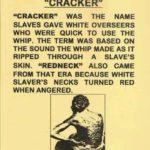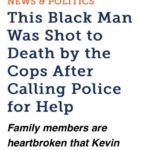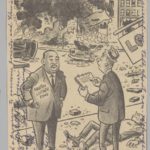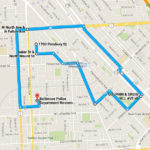Rest in Peace to the nine victims of the Charleston Shooting.
Rest in peace Sharonda Coleman-Singleton.
Rest in peace Reverend Clementa Pinckney.
Rest in peace Cynthia Hurd.
Rest in peace Tywanza Sanders.
Rest in peace Myra Thompson.
Rest in peace Ethel Lee Lance.
Rest in peace Daniel L. Simmons.
Rest in peace Reverend Depayne Middleton-Doctor.
Rest in peace Susie Jackson.
Prayers and condolences to our brothers and sisters and family in Charleston.
so a 21 year old white man walked into a black church tonight in Charleston and opened fire killing eight people. This person is a terrorist but I’m willing to bet all the money I have and all the money I will ever make that he will not be labeled as such because he’s a white man and not brown and/or muslim
The media is gonna find the cutest picture of him and talk about how he once got an A on a math test in 4th grade. They will do everything to try and humanize him.
Denmark Vesey, Forgotten Hero
In the wake of tonight’s tragic shooting incident at the church Denmark Vesey founded via slave revolt in Charleston, South Carolina, here’s some facts to know about Vesey.
Widespread recognition for Denmark Vesey has been a long time coming. In 1822, in Charleston, South Carolina, Vesey masterminded what would have been the largest slave revolt in American history. When an informer revealed the plans at the last minute and the revolt was nipped in the bud, Charleston authorities downplayed the story, claiming that they had “allowed” the plot to progress so as to ensure the capture of its leaders. Fearing future attempts at insurrection, Charleston slaveowners had Vesey and many of his co-conspirators put to death, and hid written records of the Vesey episode from their slaves. Vesey’s legacy was, for all intents and purposes, buried and forgotten.
Now, one hundred and seventy-seven years later, we are witnessing a surge of interest in this forgotten American hero. Three books on Vesey and his plot have appeared in 1999—He Shall Go Out Free, by Douglas R. Egerton, Designs Against Charleston: The Trial Record of the Denmark Slave Conspiracy of 1822, edited by Edward A. Pearson, and Denmark Vesey, by David Robertson—and there is talk of television specials and a feature film in the works. Unknown to most people, however, is the fact that Vesey’s story has been recounted for posterity before—in the pages of The Atlantic Monthly.
In the June, 1861, issue there appeared a detailed account of Vesey’s planned revolt and its suppression, titled “Denmark Vesey.” Its author, a frequent Atlantic contributor named Thomas Wentworth Higginson, was a Cambridge, Massachusetts, minister and a committed abolitionist. (In other issues of the magazine Higginson documented the stories of revolts by Toussaint L’Overture and Nat Turner. In 1862 he served as colonel of the first black regiment in the Civil War, the First South Carolina Volunteers.)
In his Atlantic account Higginson described Vesey’s plan (which was developed in collaboration with a slave named Peter Poyas) as “the most elaborate insurrectionary project ever formed by American slaves…. In boldness of conception and thoroughness of organization there has been nothing to compare it with.” Higginson went on:
That a conspiracy on so large a scale should have existed in embryo during four years, and in an active form for several months, and yet have been so well managed … shows extraordinary ability in the leaders, and a talent for concerted action on the part of the slaves generally with which they have hardly been credited.Vesey was no longer a slave at the time he planned the revolt—he had purchased his own freedom several years before, so his motives were not self-serving—and Charleston’s official report of the episode, as quoted by Higginson, made note of Vesey’s pride and the strength of his convictions. “Even whilst walking through the streets in company with another,” the report stated, “he was not idle; for if his companion bowed to a white person, he would rebuke him, and observe that all men were born equal.” At the trial, the sentencing judge was plainly astonished in the face of the stoic heroism displayed by Vesey throughout his ordeal. Higginson quoted the judge addressing Vesey:
“It is difficult to imagine, what infatuation could have prompted you to attempt an enterprise so wild and visionary. You were a free man, comely, wealthy, and enjoyed every comfort compatible with your situation. You had, therefore, much to risk and little to gain.”As though responding to the judge four decades after the fact, Higginson posed a rhetorical question: “Is slavery, then, a thing so intrinsically detestable, that a man thus favored will engage in a plan this desperate merely to rescue his children from it?”
Higginson’s goal was the preservation of Vesey’s story for future generations. “South Carolinians,” he wrote in conclusion,
[now have] a distaste for the memory of the tale; and the official reports which told what slaves had once planned and dared have now come to be among the rarest of American historical documents…. This is why, to the readers of American history, Denmark Vesey and Peter Poyas have been heretofore but the shadows of names.h/t: The Atlantic
Some historical context on the church whose members were attacked and murdered in Charleston, SC.
Mom, Daughter Who Hosted Texas Pool Party Explain What Happened Moments Before Cops Arrived
Lashauna Burks said her daughter simply wanted to celebrate the end of the school year with her friends on Friday by hosting a party that promised food, fun and music. However, the gathering at the Craig Ranch Community Pool in McKinney, Texas abruptly turned violent when two white women at a nearby pool began making racist comments at the black teen partygoers.
















